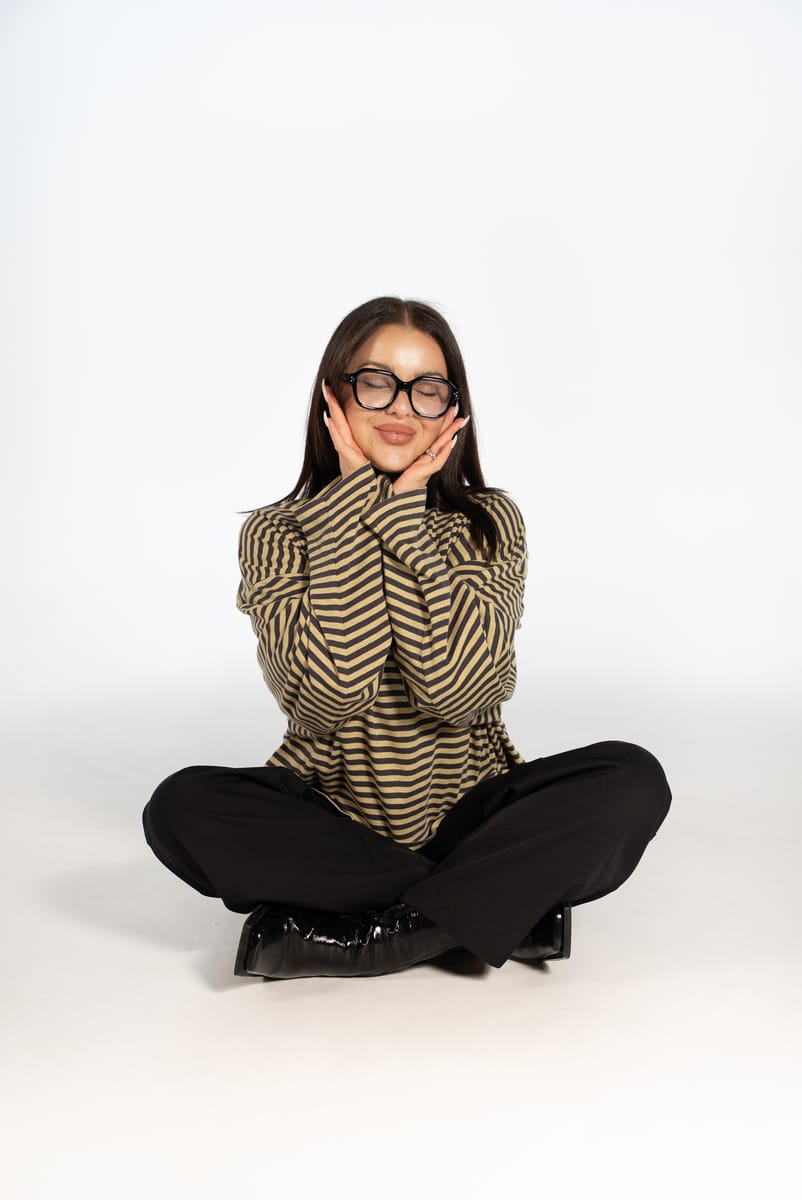
Your branding shapes whether consumers connect with your brand on a deep level. In 2024, effective branding strategies include personalisation, simple maximalism, sonic branding, eco-friendly practices, and embracing authenticity.
So, you’re building your brand.
It’s your baby. You’ve spent blood, sweat and tears on this thing. Traded countless hours of your life. It’s cost you almost everything, and not just in a monetary sense…
Now you’re ready to bring it all to fruition.
You just need to pull it all together and figure out how to present your brand to the world.
There’s just one problem – uh, how TF do you do that?
Let me guess. You’re the kind of person who views themselves as 'business-minded' or 'not creative at all.' You think this branding stuff is a whole alien world you could never understand.
Not to mention there are new brands popping up every damn day, and they’re all so trendy and cool. It’s super daunting. You don’t want to make the wrong decision and accidentally black ball yourself as undesirable or uncool.
No, you want to make an impression. You want to steal the attention away from your competitors for even just a few split seconds.
Branding trends are constantly evolving, just like trends in fashion, interior design, pop-culture, and general consumer moods and tastes.
So how do we know what’s hot and what’s not?
And is it even really that important?
Well, according to Steve Forbes, Editor-in-Chief at Forbes, 'Your brand is the single most important investment you can make in your business.'
And he’s not lying.
Branding will make or break you in today’s competitive market.
And I'm not just talking about your visual branding. I'm talking about the way you express what your brand is all about.
So, I am here to show you the lay of the land. As someone with absolutely no business experience, let’s combine our powers like 'fusion-ha' in Dragon Ball-Z.
I’ve compiled some of the strongest trends in branding of 2024 thus far so you don’t have to. You’re welcome x
Personalisation.
By personalisation, we mean tailoring messages and experiences to the unique needs and preferences of your customers. This helps your brand build stronger connections and cultivate a more distinct identity.
This can look like messaging, communication, product offerings and customer services made specifically to fit the characteristics and needs of each individual customer.
So start by looking at your data to understand past purchases, behaviors and demographic information. Then use what you find to create tailored experiences.
It can be so simple. Think--Coca-Cola’s 'Share a Coke' campaign, where the brand added names to billions of Coke bottles. The tactic generated over 100 million interactions on social media and boosted engagement while millions of people set out to find their name.
Simple maximalism.
Sounds counterintuitive, I know. But we don’t need to complicate things here. Mindful use of negative space, a bold font, a striking monochromatic colour palette – mwah, chefs kiss, Bellissima.
When it comes to your visual style, choose one element to make striking and use others to create harmony around it. Take our friends at Flight Coffee as an example. Their canned coffees are the perfect example of simple maximalism done perfectly.
Sonic branding.
What do you think of when you hear 'ba-da-ba-ba-ba…'? Instantly, 'I’m lovin’ it,' right? And then you go on autopilot and regain consciousness in a McDonald’s car park with a burger in one hand and a fro-co in the other.
Multimedia branding was bound to happen as the technological age advances, and sonic branding is a powerful example of this. So think about how you can go beyond visual elements and stimulate an auditory association with your brand.
Every time people hear your sound, they visualise your brand. (And no, I’m not talking about sh*tty jingles. We don’t need any more of those.)
Eco-friendly focus.
Did you know that 57% of consumers are willing to change their purchasing habits to help reduce negative environmental impact? Eco-friendly has been a huge focus for brands this year. And this has encompassed everything from sustainable practices to packaging and initiatives.
Basically, if your brand gives a sh*t, consumers give a sh*t about you. Simple. Just check out this article on disruptive packaging for inspo 😉.
Keeping it real.
Things like unrealistic body shapes and beauty standards are officially out. It’s tone deaf. And brand activism for diversity and inclusion is in.
Brands are now embracing natural human language that feels real. Conversational, honest and inclusive is the move. This means businesses are not only being transparent with their consumers. They’re also opening conversation with them to ensure they’re catering to the needs of the subcultures that interact with their brand.
By developing your product offerings and being intentional when defining your customer base, you can create an authentic and inclusive brand while also fuelling growth. Rihanna’s Savage X Fenty lingerie brand does this beautifully. With an estimated $270 million market value, I’d say her audience agrees.
There’s no real handbook for a perfect brand. It takes tweaks, trials, and maybe even some tribulations. But at the heart of it all, your branding should be about connecting your consumers to the core of what your business stands for.
These recent trends mark a shift into a more human era of branding (which may be ironic, given we’re moving into a world that often feels less and less human every day).
And maybe that’s why we want to feel like we’re buying from something with a bit of soul.
-Sophie, Writer
